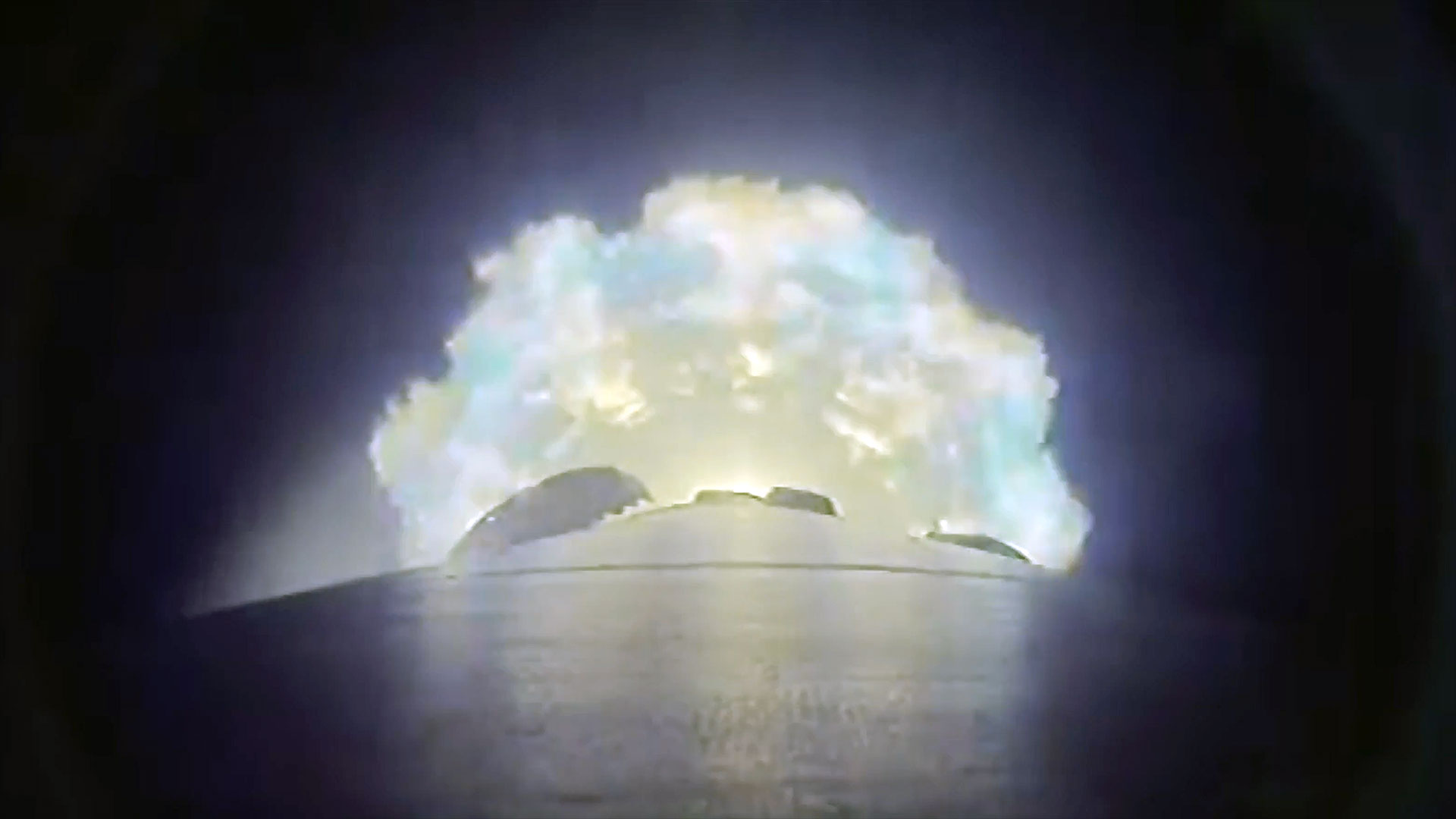Space Station Glitch Possibly Caused by Solar Flare
Updated at 2:40 p.m. EST
HOUSTON -- A glitch in the International Space Station's (ISS) U.S.-built attitude control system may have its root in a massive solar flare that erupted from the Sun this week, a NASA flight director said Friday.
"The leading theory right now is that the additional solar activity has taken the normal density of the [Earth's] atmosphere and it's about two and a half times more than it normally is," ISS flight director Joel Montalbano said during a morning update here at the Johnson Space Center. "So we're seeing some problems with our software converging on a nice stable attitude for attitude control."
The space station typically relies on four large gyroscopes-one of which is currently offline-that spin to maintain attitude control without consuming precious propellant [image]. Only two gyroscopes are required to maintain ISS orientation with the system. The station is also equipped with Russian thrusters and can be oriented by docked spacecraft, such as Russian Soyuz and Progress vehicles, as well as NASA shuttles.
NASA flight controllers opted to use the space shuttle Discovery's thrusters to orient the ISS on Thursday until the non-propellant mode is reactivated, Montalbano said.
"So what we'll do is that solar activity is dying down and were going to try again to go to a non-propulsion mode later today," Montalbano said, adding that Discovery is well stocked with propellant to help control ISS attitudes through the two spacecraft's docked STS-116 mission operations. "We think we understand the problem."
To date, solar activity has not endangered the astronauts and their ISS counterparts in any way, though they did take precautions earlier this week to be safe. Spacewalking astronauts mentioned the solar flare may have led to some stunning auroras they spotted while working outside the ISS on Thursday.
Breaking space news, the latest updates on rocket launches, skywatching events and more!
Flight controllers mentioned the solar flare's effects in the morning mail to Discovery's STS-116 crew.
"Isn't it interesting that solar winds appear to be affecting your flight!" flight controllers relayed up to the shuttle astronauts. "We hope that all of you take a little time today to catch your breath and to look out the window in order to store future memories."
While NASA might not seem overly concerned about the recent solar activity, European Space Agency (ESA) mission controllers have taken steps to avoid damage to spacecraft after several of them began acting strangely shortly after the flares.
"We saw three anomolies on December 13," said Juergen Volpp, Spacecraft Operations Manager for ESA's Cluster mission, which uses four identical spacecraft to study the Earth's magnetosphere.
"Cluster 1 had a minor instrument minor instrument anomoly, while Cluster 2 and 4 had on-board systems affected," Volpp said.
Other ESA missions, including Envisat and Integral, also appeared to be affected. In all three cases, steps were taken to protect the spacecrafts' sensors.
- New Forecast: Severe Space Storm Headed to Earth
- STS-116 Mission Profile Video: EVA 2
- Images: The Spacewalks of NASA's STS-116
- Images: Discovery's STS-116 Launch Day Gallery
- STS-116 Video: Power is Everything
- STS-116 Video: Building Blocks
- Mission Discovery: The ISS Rewiring Job of NASA's STS-116
- Complete Space Shuttle Mission Coverage
- The Great Space Quiz: Space Shuttle Countdown
- All About the Space Shuttle

Tariq is the award-winning Editor-in-Chief of Space.com and joined the team in 2001. He covers human spaceflight, as well as skywatching and entertainment. He became Space.com's Editor-in-Chief in 2019. Before joining Space.com, Tariq was a staff reporter for The Los Angeles Times covering education and city beats in La Habra, Fullerton and Huntington Beach. He's a recipient of the 2022 Harry Kolcum Award for excellence in space reporting and the 2025 Space Pioneer Award from the National Space Society. He is an Eagle Scout and Space Camp alum with journalism degrees from the USC and NYU. You can find Tariq at Space.com and as the co-host to the This Week In Space podcast on the TWiT network. To see his latest project, you can follow Tariq on Twitter @tariqjmalik.
